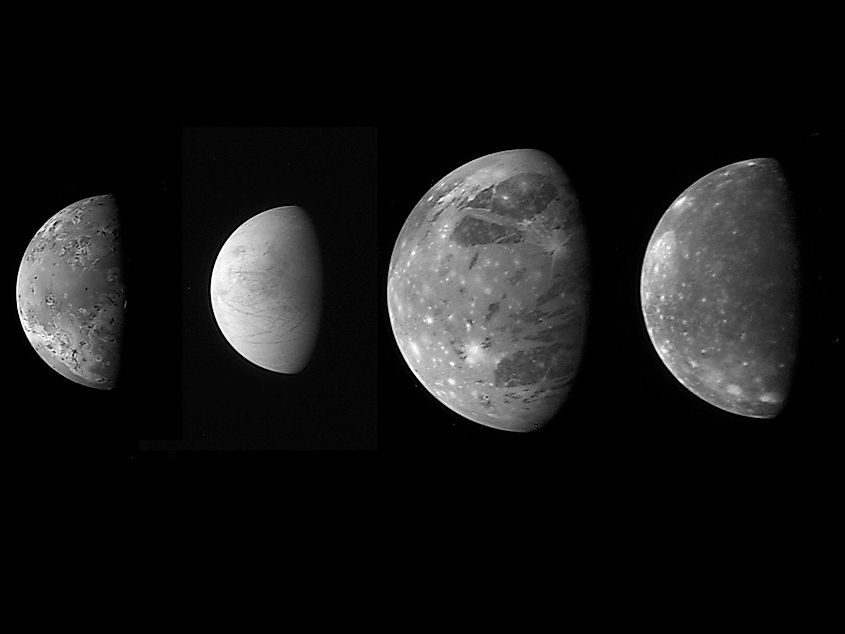The first 4 moons of jupiter which were discovered are called the galilean moons they are named after the famous italian astronomer galileo galilei who discovered them in january 1610

The Galilean Moons: Jupiter’s Famously Discovered Moons
Jupiter, the largest planet in our solar system, has a fascinating collection of moons that orbit around it. Amongst these celestial bodies, the first four moons discovered hold great historical significance. Revered as the Galilean Moons, they were named after the brilliant Italian astronomer Galileo Galilei, who first observed them in January 1610. Let us dive into the captivating details about these four extraordinary companions of Jupiter.
A Glimpse into Galileo’s Groundbreaking Discovery

Galileo Galilei, a prominent figure of the scientific revolution, changed our understanding of the cosmos with his revolutionary observations. Armed with a telescope of his invention, he directed his lens towards the gas giant, Jupiter. To his amazement, he witnessed four bright points of light dancing around the massive planet.
Unbeknownst to Galileo, he had discovered the first known moons to orbit another planet. This groundbreaking revelation challenged the prevailing Aristotelian belief that all celestial bodies revolved exclusively around Earth.
Unveiling the Galilean Moons
The Galilean Moons are Io, Europa, Ganymede, and Callisto. These names pay homage to the mythical lovers and companions of Zeus (Jupiter, in Roman mythology), fittingly in line with the Roman nomenclature adopted for Jupiter and its moons.
1. Io: As the closest moon to Jupiter, Io is renowned for its strikingly vivid colors. Its surface is embellished with various shades, including yellow, red, white, and black. Io is the most volcanically active body in the solar system, with hundreds of active volcanoes constantly reshaping its surface.
2. Europa: Europa, slightly smaller than our moon, has enthralled scientists with its icy crust. Beneath this cold exterior lies a global salty ocean, harboring the possibility of supporting life. The revealing cracks and ridges on its surface have spurred further intrigue regarding its potential habitability.
3. Ganymede: Ganymede, the largest moon in our solar system, even surpasses the size of the planet Mercury. This moon boasts a diverse terrain, with dark, cratered regions contrasting against the lighter, grooved areas. Ganymede possesses its own magnetic field, offering valuable insights into the moon’s internal structure.
4. Callisto: Callisto, the outermost of the Galilean Moons, is a heavily cratered moon. Scientists believe that this moon has remained relatively unchanged for billions of years, preserving a record of impacts from the distant past. Callisto’s surface bears a captivating blend of ancient craters, grooves, and gulches.
The Galilean Moons: A Window into Jupiter’s Secrets
The discovery of the Galilean Moons revolutionized our understanding of both Jupiter and the universe. Their existence underscores the profound complexities within our solar system. Their unique properties intrigue astronomers, who meticulously study these moons to unlock Jupiter’s mysteries and gather insights into our own planet’s history.
Understanding the Galilean Moons not only allows us to appreciate the ingenuity of Galileo Galilei but also endlessly inspires future generations of scientists to reach for the stars. The mesmerizing dance of these four moons around their gas giant companion serves as a constant reminder of the beauty and boundless wonders waiting to be explored in the vast expanse of the cosmos.
Source: Space.com
Tags
Share
Related Posts
Quick Links
Legal Stuff


